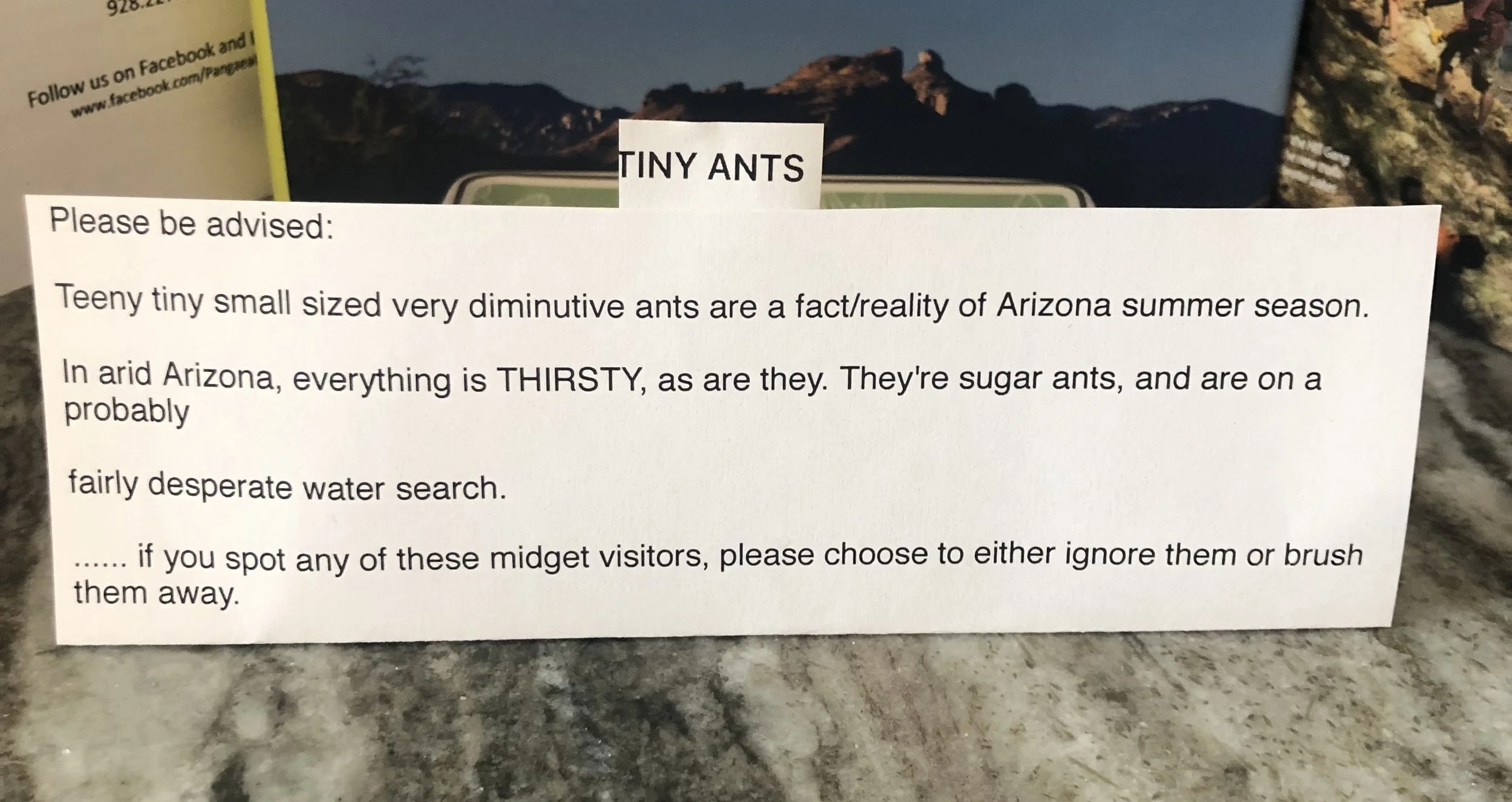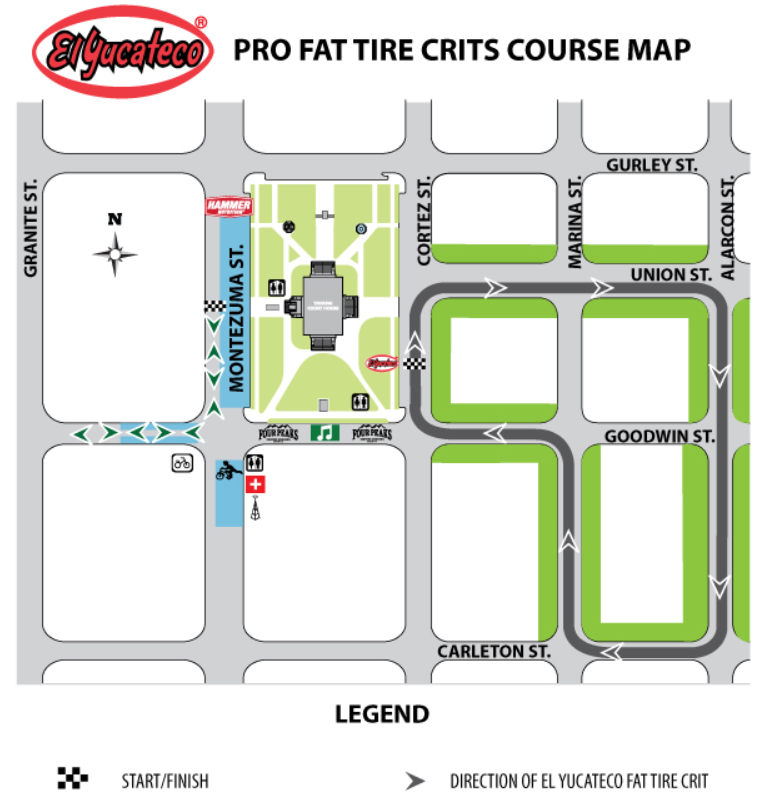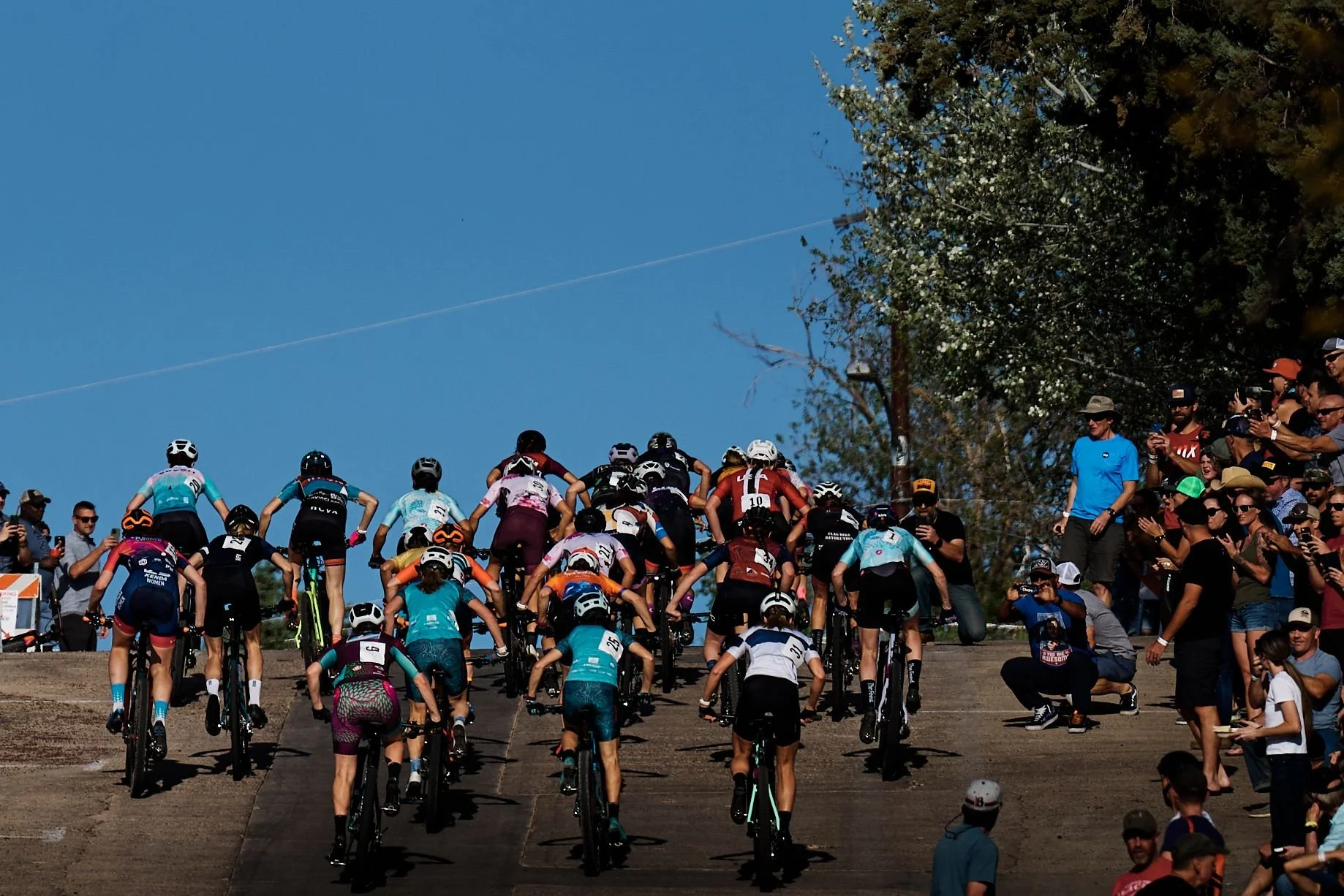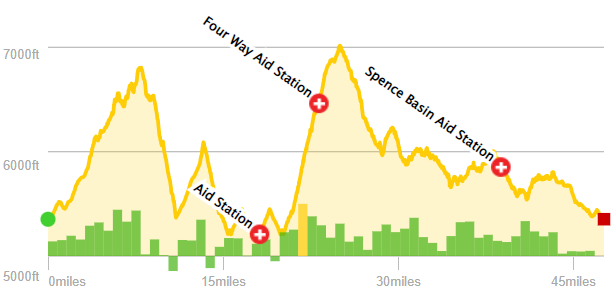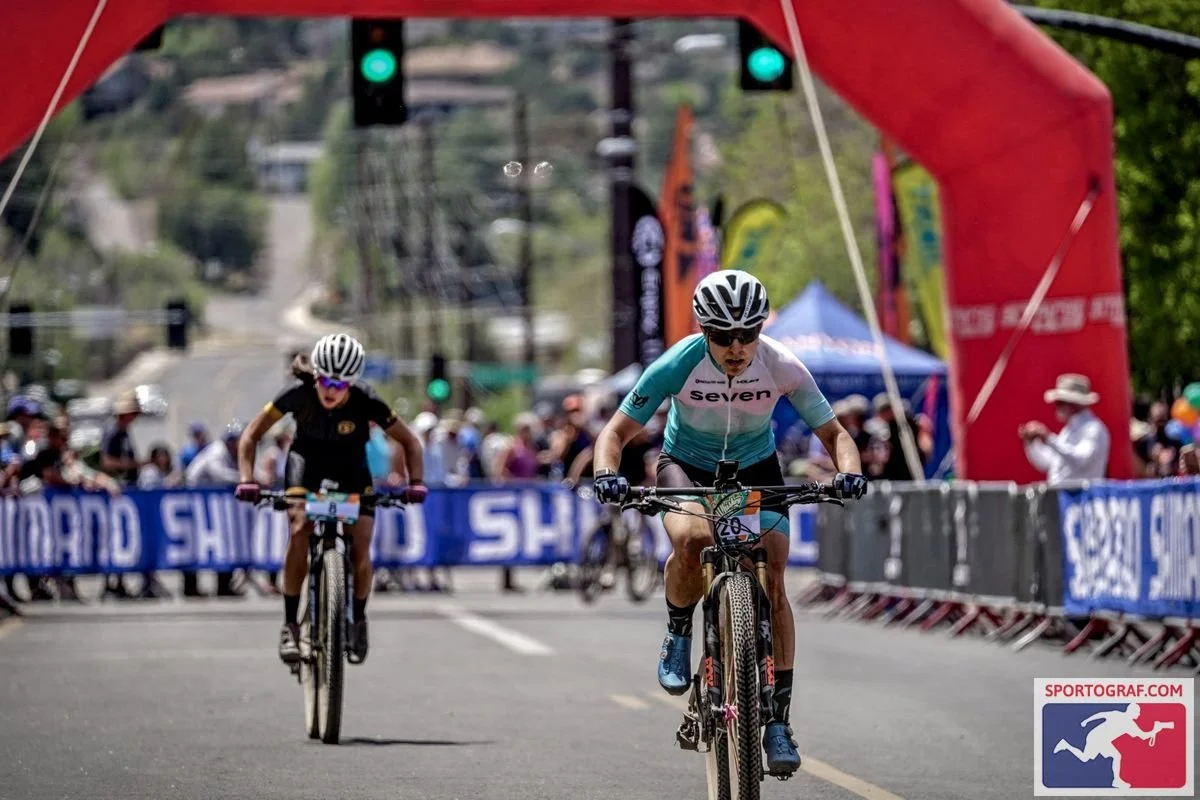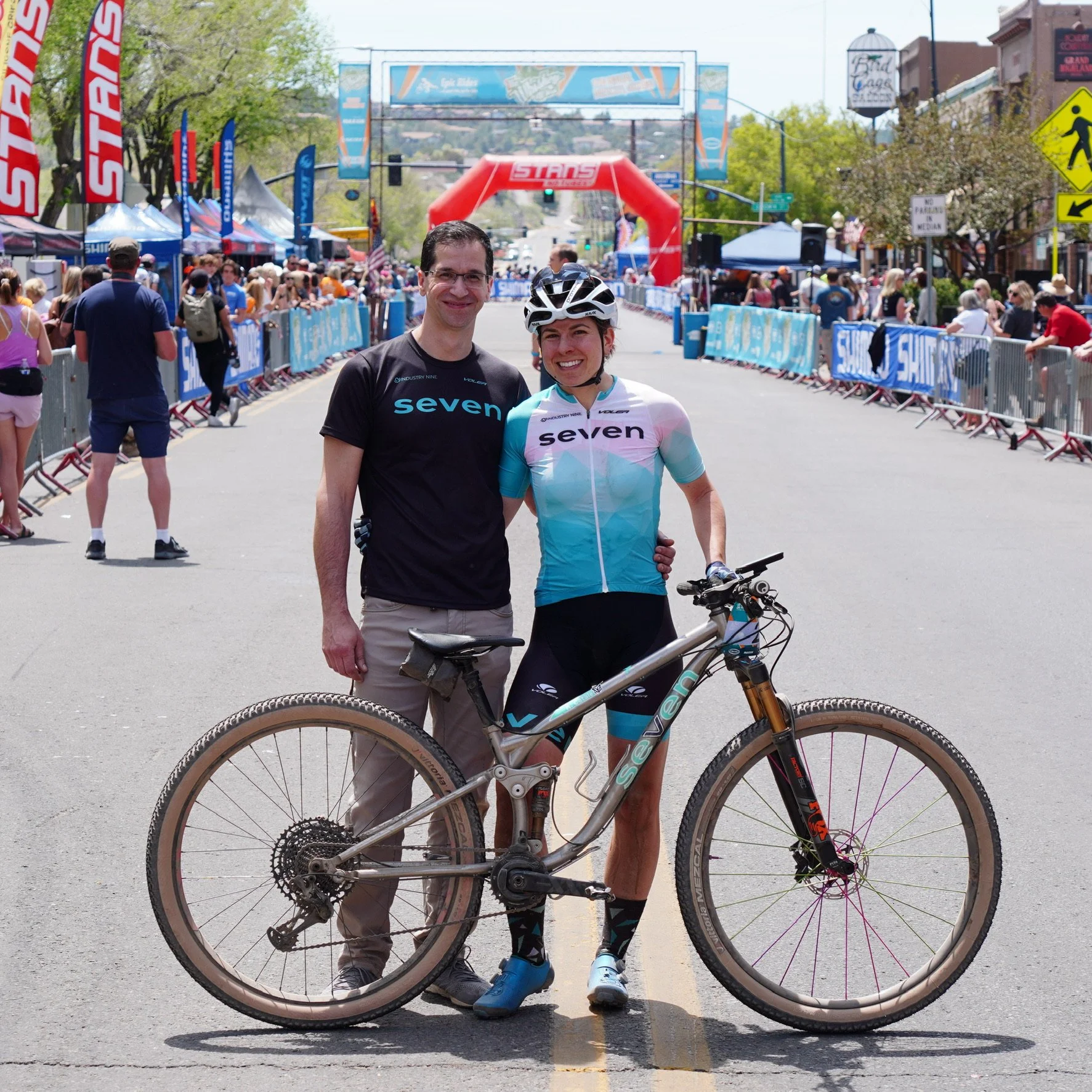Coming into a big race weekend, I always hope for the best and prepare for the worst.
“Hoping for the best” derives from the months of focused training rides, skills work, evening strength sessions, massages, dietician appointments, therapy sessions, and lots of recovery. It’s a firm belief that this will be the race the stars align and every small detail falls into place, when all the dark Winter training pays off in the sunshine of success.
Being “prepared for the worst” is why I fill my luggage until it is just under the airline’s weight limit for every flight, why I always end up with five extra days worth of clothing at the end of any trip (even when I bring laundry detergent for a washing machine and for hand washing), and why we can never see out the back window of the car on road trips. I was a Girl Scout, after all, and I’m nothing if not prepared.
However, “preparing for the worst” differs greatly from expecting it to happen; though if I’m being honest with myself, I’m not at all surprised by the race weekend’s events. It’s difficult to prepare for wanting to quit before you’ve even started, for digging into the well of motivation and coming up completely dry. For someone who thrives on competition, pushing limits, and seeing my hard work in action, the desire to curl up and hide when I should be donning my race kit is a pretty rare and unfamiliar feeling. As it turns out though, I’m only a human, no matter how much I try to conjure my mental superpowers.
The WeekenD FORMAT
The Epic Rides Off-Road race weekends are always exciting and memorable. For the Pro racers, a race weekend includes:
Friday Night Pro Fat Tire Crit: a ~20 minute race on a very short (1 mile), paved loop downtown open to the Pro racers only. You must ride the same exact bike (frame, chainring, cassette, etc.) that you plan to ride during the weekend’s main event (see #2) except for tires, which can be skinnier than standard MTB tires.
Backcountry Marathon Mountain Bike Race: a long (~50 mile) single-loop course showcasing some of the area’s best singletrack connected by forest roads and long climbs.
In the past, Epic Rides hosted these race weekends in Prescott, AZ (home of the Whiskey Off-Road), Grand Junction, CO, Carson City, NV, and Bentonville, AR. The Backcountry Marathon Race is open to Amateurs as well, so these weekends typically draw a huge crowd. The promoters treat the Pro racers very well, paying the top 12 finishers in Men and Women categories (generous, equal payout too!). Plus, the event has a weekend-long expo for the community to interact with the Pro’s and participating sponsors/vendors. These events usually draw a VERY strong field of Pro’s, and this year was no exception.
Before this year, I had completed three Off-Road race weekends, all in 2019. This was the first Whiskey Off-Road since 2019, so I was equal parts excited, nervous, and thrilled to be back. While my race season started a few weeks ago, I knew this was going to be a true test of my fitness against the strongest women in the country. My goal for this race was to be “in the money” (top 12), which was a tall order considering the depth of the Pro women’s field this year.
Back to the Desert
Being back in Arizona was such a treat after a very long, sloppy Winter. With the exception of one sunny day in North Carolina in mid-April, I had not experienced 70F+ this year (except in my sauna). I forgot about how the deep warmth of Arizona sunshine seeps into my bones and muscles, warming my blood and making me feel free. I forgot about the dryness of desert air and the vastness of the mountains and valleys throughout the West. And, I forgot about seasonal allergies. Wowzers, my body was definitely fighting it’s first real pollen invasion of the year, which made breathing a bit more challenging, especially at Prescott’s moderate altitude. However, sunshine is good for the body and the mind, and my spirits were already feeling a bit lighter upon arriving in the desert.
Our adorable Airbnb was just outside of downtown Prescott. The rental was called “Everything Evergreen” — a small, one-bedroom apartment that was clean, comfortable, and adorned with thoughtfulness. Notably, a small sign in the kitchen warned us about the resident “teeny tiny small sized very diminutive ants” and asked us to ignore them or brush them away.
I call out this sign because Joe and I have a teeny tiny ant “problem” in our home every Spring. Whenever they start invading our kitchen, we set up traps, squish them with our fingers, and try like maniacs to figure out where they are coming from. Sometimes, I catch Joe early in the morning unmoving like a statue in the kitchen, with cabinets and the dishwasher thrown open while studying the ants’ movement patterns and trying to determine their newest gateway into our home. Sometimes there are so many teeny tiny ants that we can’t keep up with killing all of them, and the only thing we ultimately achieve is looking like flailing idiots in our too-small kitchen space before we relent and walk away, defeated by our teeny tiny nemeses.
When I read the Airbnb host’s sign, my internal dialog was somethin like “huh…I’ve never thought to just let them live. They aren’t harming me, even if they get into my bag, as long as I clean up the kitchen and cover our food.” I had a live cockroach in my suitcase once, which was terrifying. But an ant or two? They don’t bite and they aren’t going to start an infestation in our house if we happen to bring a few home — some of their long-lost ant cousins already have that covered.
All at once, I accepted the teeny tiny ants as part of our stay. It was just that simple.
When I encountered the first ants of the trip, I actually said out loud “hey little guys! Sorry I’m not going to feed you, but I’ll let you live” and then I LET THEM LIVE. Indeed it was a foreign concept. Strangely, I felt an overwhelming sense of pride at this mindset shift, especially considering the heartache and energy I have spent over my lifetime on ant extermination. While seemingly an insignificant part of this race weekend story, I wish so badly that I could bottle up that experience and carry it with me like a perfume, to use anytime I need to accept or let go of something that feels uncomfortable or unpleasant. Its potency would be so powerful that I wouldn’t be phased by things like external validation or trying to please everyone all the time. I would call it something cheesy: Eau d’Acceptance, like an exclusive French brand sold at only the finest parfumerie. No need for superpowers when I have my Eau d’Acceptance to shield me from the world’s harshest critics and uncertainties.
Alright, alright, back to the main story.
The Pro Fat Tire Crit
If you told a random passerby that the Fat Tire Crit was not the main event of the weekend, they would likely be shocked, given the number of fans lining the road and cheering on the Pro’s. It’s an event designed to draw a crowd, with a “wall” climb up both blocks of Union Street and a swooping downhill turn into the start/finish on Cortez Street.
In the past, the Pro’s had a full day of rest between the Fat Tire Crit and the Backcountry Marathon race. This year, the promoters modified the race format so the Pro and Amateur fields all race on Saturday morning. However, they still kept the Pro crit on Friday evening. As a result, I planned to use the crit as a fun set of openers for the “real” race on Saturday, rather than trying to empty the tank and chase a high result. My plan was to ride maybe three laps and then pull off to the side after the finish line.
Don’t be fooled by the two dimensional cartoon; that Union St road is a two-block uphill wall.
Unfortunately, nothing ever goes according to plan. The energy that evening was electric, with crowds lining the entire course, especially the start/finish and Union Street climb. While I started on the very last row because I was late to staging, I climbed my way up to mid-pack on the first lap.
Plans to not race while participating in a race never go well for me. Instead, I soaked in the cheering fans’ encouragement and pushed myself up the Union Street climb multiple times. Some people were holding out beers and dollar bill hand-ups while I rode by, but I just smiled for the crowd, which increased the cheering volume. I was nowhere near the lead group of four women and there was absolutely nothing to gain by continuing to crush myself each lap (only the winner received a payout), but I marched on in stupidity and painful joy for nearly 15 minutes before I was pulled. In the end, I finished 12th place, which is pretty remarkable given my lack of serious warmup or mental preparation. At least I had just over 12 hours to recover before warming up for the big race on Saturday morning…
That’s me at the top on the left!
The Backcountry Marathon MTB Race
On Saturday morning, I woke up to darkness. Not just physical darkness because it was 4:30am, but mental darkness, like there was a hole in my brain where my love of biking and racing used to exist.
To me, “mountain bike” is a noun, a verb, a career, a dream, and a home. Despite the physical risk associated with this sport, it’s my safe space, the place where I feel most alive.
Usually, I’m no stranger to race day anxiety, especially for bigger races, but on this race morning I felt nothing for the word, the dream, the home I usually love. I felt only immense dread. I didn’t want to get up and make coffee, eat pancakes, fill my race bottles, and warm up in the chilly morning air; hell, I didn’t even want to pull myself out of bed. I slept horribly, likely from a combination of nerves, altitude, the fat tire crit just hours before I went to sleep. On this race morning, everything felt wrong and out of place.
True to race morning tradition, my sister and nephew video called to wish me luck while I ate breakfast. On the call, my sister asked how I was feeling and I flat out told her I didn’t want to race. I then proceeded to cry, which in hindsight must have been incredibly disorienting for her and James who usually see me smiling and excited during our race morning tradition. Despite her attempts to console me, nothing my sister (or my babbling nephew, for that matter) could have said to make me feel better, so I ended the call early and went back to forcing myself to eat breakfast. Despite the warm coffee, I felt frozen, like my body was getting tenser and more rigid as the morning progressed.
When Joe woke, I had about 20 minutes before I needed to leave for my warm up. He noticed the tears in my eyes and asked if I was alright. I immediately started sobbing uncontrollably and told him I didn’t want to race. I melted to the floor in a crying heap of shame and disappointment. I had worked toward this race for months and flew across the country for this day, only to feel like this. I hadn’t even started the race yet and I already wanted to quit.
For only the second time ever in my racing career, my depression seeped into race day. Usually my love for racing and mountain biking is enough to protect the sacred race days from the crippling symptoms of my depression. But not today.
Without pause, Joe replied “ok, then you don’t have to race.” Surprisingly, his response triggered the teeny, tiny, diminutive spark of fight I had left. A very small part of me deep in my heart still wanted to race, so I said “no, I don’t want to give up after everything it took to get here.” Joe then suggested that I go out for my warmup and assess how I felt after that. If I felt well enough, I could start the race. Just get outside on my bike and do what I love without any pressure or expectation. So, that’s what I did.
After my warmup, I didn’t feel bad enough to quit. I resolved to ride to the first aid station (mile 18) and assess how I felt after that. Just show up and do my best with my current circumstances, without pressure or expectation. So, that’s what I did.
The race began in a seemingly slumbering downtown at 7am on Prescott’s historic Whiskey Row. As we lined up under the enormous blow-up arch, I turned to a good friend and fellow racer, Emma, and wished her luck. I don’t suspect she’ll see this narrative, but I hope she knows how impactful her positivity is to the people around her. Despite the inherently independent nature of endurance sports, camaraderie is a salve that helps the itching feeling in those tense minutes leading up to the race start. Emma gave me calmness that morning. While my brain and insides felt tangled and dark, I did my best to embody the version of myself that would have truly wanted to be standing on that start line.
Shout out to Emma, in the orange helmet and jersey, for helping keep my pre-race jitters at bay :)
Whiskey Row was the start of the first of two long climbs on course. This one was 8 miles long and the first 5.5 miles were on some form of road (paved turning into gravel around the 3 mile mark). The pace started easy because we had a neutral start with a police escort. I was thankful for this because I don’t know if my mind would have been able to handle immediate burning legs and oxygen debt.
The course started with a ~8mi climb out of Prescott, then a ~7mi climb out of Skull Valley.
At about 3.5 miles into the climb, the pace picked up and the lead group of seven started breaking away. I have always wanted to be part of that initial selection, but did not have the mental strength to push through today, so I stayed with the chasing group. Physically I felt fine at this point, but my brain was holding me back, reminding me of the heavy pain I was already carrying before I even began the day, and all the pain that was waiting for me in the coming hours. Thus, when a small chasing group broke away about a mile later, I again held back. Especially at altitude, I suspected if I burned too many matches too soon, I would regret it later.
At mile 5.5, I dove into the first singletrack as part of a six woman chasing group. Unlike my usual aggressive racing style, I again hung back and let the five other women battle to be the first into the trail before me. My current mental state had sucked the fight out of me, leaving an oddly polite and timid racer in its place. At the time, I immediately knew being last into the tight, twisty trail was a mistake and then the mistake was realized when I got stuck behind two girls who bobbled over a relatively simple technical feature (that I practiced two days before). I was forced to put my foot down and walk while the first three women in our chasing group pedaled away. Looking back, I know that I should have pushed harder to get into the singletrack at the front of that group because I would have found time to recover.
For the first hour of the race, I couldn’t see well out of my left eye. My vision was blurry, as if the cornea was scratched, or maybe I had one of those teeny, tiny, diminutive ants in my eye (probably not). Most likely, it was allergies. I was struggling immensely with depth perception, a dangerous deficit during the first descent of the day. After the first 8-mile climb, the singletrack descent was mostly a series of water bars, tight sand corners, and loose rocks that made it feel like I was “rock surfing”. I learned that downhill water bars are most definitely a mountain biking pirate’s worst nightmare. With compromised depth perception, I ended up riding slightly out of my comfort zone, but much slower than I would if I could see clearly through both eyes. The theme of the weekend was acceptance, though, so I did my best and let that be enough.
There were two women in front of me when we finished the first singletrack descent and started climbing again. While still feeling like a depressed pirate, I was able to dig deep enough to pass one woman before descending the exposed, loose gravel down into Skull Valley where Joe waited at the first aid station with two fresh bottles of my Flow Formulas drink mix. It was only mid-morning but the sun was getting hot, the altitude was certainly affecting me, and the dust was coating my legs and my lungs. Yet, upon arriving at the aid station, I decided I still didn’t feel terrible enough to quit. Perhaps I could ride until I saw Joe again at the third aid station (mile 38) and assess how I felt when I got there. Just settle into a steady pace and give my best without pressure or expectation. So, that’s what I did.
The Skull Valley climb is brutal. It’s entirely gravel, loose in spots, and there’s two-way race traffic for the first half, which makes climbing sketchy around blind corners. Luckily, I found a rhythm and passed another woman in the first couple miles.
At the top of the climb out of Skull Valley (7 miles since the aid station), I noticed that my first of two bottles was only about 25% full. I decided to swap it with the bottle in my back pocket so I could take the weight off my back and have a fresh bottle handy when I hit singletrack. Because the current bottle still had several sips left, I tipped my head back while breathing especially hard at the end of the climb. In a hurried fit to complete this maneuver as fast as possible, I squeezed the rest of the bottle as quick as I could into my mouth. Unfortunately, my breathing pattern didn’t align well with angle of attack and I ended up turning my bottle into a Netty Pot. If you don’t know what a Netty Pot is you should Google it; all I’ll say is that at least half of the bottle’s remaining contents traveled through my nose. As it turns out, electrolytes, sugar, water, and flavoring make an excellent allergy decongestant. I have never used a Netty Pot before, but that moment might have made me a convert because it was the clearest my sinuses had been all day.
Upon cresting the Skull Valley climb, I dropped into amazing singletrack. At around the 3-hour mark, I finally felt strong and confident. My race legs showed up to the party, and so I partied for the rest of the race. I flowed through corners and bunny hopped over stumps and rocks just like I do during fun group rides with friends back home. Finally, this was “mountain biking” the career, the dream, the home I remembered it could be.
When I saw Joe again at the third aid station, I knew I felt well enough to finish the race. No need to assess or think twice now, just give everything I have to finish the race strong and happy without pressure or expectation. So, that’s what I did.
We had a few miles of superbly fun singletrack remaining before the last 4 miles of paved roads back to Whiskey Row. On a winding singletrack climb, a pack of four amateur men caught me so I pulled to the side and let them pass, but decided to see how long I could hang onto the group. To my surprise, I hung on the pack until we dropped onto the paved road. Around that time, we also caught the next woman ahead of me. At first, I tried to be sneaky and stuck to the back of the pack of men as they overtook her. I was drafting off of the group and didn’t want her to know I was there yet, because I was trying to save some energy for the finish. That facade lasted all of two minutes, though, because she looked back and recognized me.
As the men pulled away, I waited patiently while drafting behind my female competitor. I let her work for a while, then pulled ahead to do some work too. When we turned into the final straight away, I let her take the lead and sat just behind her until I predicted about 30 seconds remained. All those weekend group ride sprints paid off (looking at you, Mike, Johnny, and Colin!) because I was able to dig deep, shift to my hardest gear and win the finish line sprint. Without knowing it at the time, I nabbed the final paid spot — 12th place.
Finishing this race “in the money” felt like such an enormous accomplishment for me. First, I felt like a “real pro” for getting paid for my race result. I have been paid at races before, but never at a race with this much depth; this race felt different somehow. More importantly, though, I learned that I am capable of moving forward—and finishing strong!—even when everything feels dark. By breaking the race into manageable pieces, I formed a whole race that made me proud.
Finish line celebrations included a brief hug with Emma, lots of cheers, and wonderful conversation with my Airbnb hosts. Joe and I got a rare photo together, and then went back to the Airbnb for a nap. I needed a moment to rest, to let my body and mind be still, to slow down and appreciate the 48-mile literal and metaphorical roller coaster I just completed. So, that’s what I did.
The lesson this weekend: take one step at a time. Take each step forward without pressure or expectation.
I can’t help but feel like this race experience was a metaphor for something much bigger than bike racing, like a reminder that any challenge can be broken down into small steps. I mean, of course it is. Is it even a bike race if I don’t wax poetic over something I learned along the way?
Next time I race, and all the times after that, I plan to show up and give whatever I am capable of giving that day. During the tense stillness before the start, maybe my competitors will even catch a whiff of Eau d’Acceptance lingering around me as I settle into another day of mountain biking—my career, my dream, my home.


